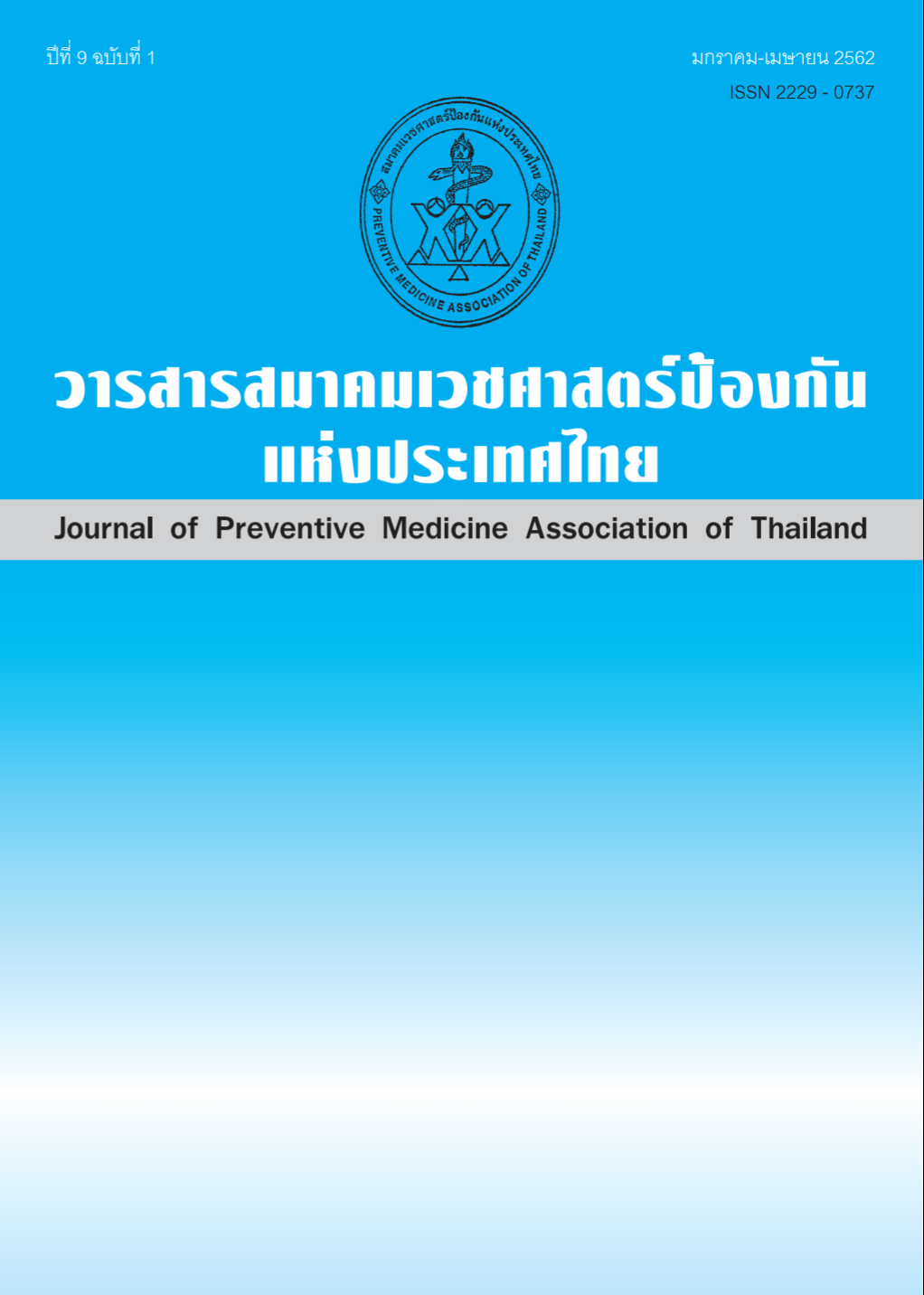Developing a Psychiatric Care Network in the Community to Prevent Recurrence
Keywords:
Mental health, Recurrence, NetworkAbstract
Today’s Thai society places great importance on material progress. People are struggling to live, causing a large amount of people stress and anxiety. This also causes greater mental health disorders and results in an increased number of psychiatric patients nationally. The problem of psychiatric patients is that upon leaving the hospital they are not receiving continuous treatment and as such there is often recurrence which is increasing every year. It is important to develop a psychiatric care network in the community to care for these patients. This will provide a better quality of life for them in many fields. For example, patients can do their daily activities, live with their families within the community, pursue careers or receive grants as aid to a better life. The caregiver has to
have the skills to take care of the patients and make sure they take medication continuously, also they need to have knowledge about the side effects of the drugs and report recurrences if it occurs. The network leaders, together with the village volunteers regularly visit to evaluate the treatment results. Developing a psychiatric care network in the community will prevent the recurrence of psychiatric patients in the area.
References
2. มูลนิธิเพื่อการพัฒนานโยบายสุขภาพระหว่างประเทศ. รายงานภาระโรคและการบาดเจ็บประชากรไทย ปี พ.ศ. 2557. นนทบุรี: แผนงานการพัฒนาดัชนีภาระทางสุขภาพเพื่อการพัฒนานโยบาย. สำนักงานพัฒนานโยบายสุขภาพระหว่างประเทศ; 2560
3. กรมสุขภาพจิต. รายงานประจำปีกรมสุขภาพจิต ปีงบประมาณ 2548. นนทบุรี: กองแผนงานกรมสุขภาพจิต; 2548.
4. มูลนิธิศรีธัญญา. เอกสารประกอบงานโครงการรณรงค์เพื่อการเปลี่ยนแปลงทัศนคติและพฤติกรรมสังคม. นนทบุรี: โรงพยาบาลศรีธัญญา; 2548.
5. ขวัญทิพย์ สุขมาก. การบำบัดรักษาผู้ป่วยโรคจิต. กรมสุขภาพจิต กระทรวงสาธารณสุข.กรุงเทพฯ: กรมสุขภาพจิต; 2558.
6. ขวัญสุดา บุญทศ, อมรรัตน์ ศรีคำสุข ไซโตะ, สุวรรณา อรุณพงศ์ไพศาล. การสนับสนุนทางสังคมต่อผู้ที่เป็นโรคจิตเภท. การประชุมวิชาการ ครั้งที่ 27 ประจำปี 2554, ขอนแก่น: ม.ป.ท.; 2554. หน้า 186-9.
7. ผู้ป่วยจิตเวชที่มารับบริการ ผู้ป่วยจิตเวชที่เกิดอาการกลับเป็นซ้ำและควบคุมอาการไม่ได้, งานเวชระเบียนและสถิติปี 2560 งานสุขภาพจิตโรงพยาบาลบรบือ จังหวัดมหาสารคาม ปี 2560.
8. สายรุ้ง จันทร์เส็ง. ปัจจัยที่เกี่ยวข้องกับความร่วมมือในการรักษาด้วยยาของผู้ที่เป็นโรคจิตเภทในโรงพยาบาลอุตรดิตถ์. [การค้นคว้าอิสระพยาบาลศาสตรมหาบัณฑิต]. เชียงใหม่: มหาวิทยาลัยเชียงใหม่; 2548.
9. ศรีสกุล แจ้คำ. การศึกษาการใช้โปรแกรมการสอนสุขภาพจิตแบบกลุ่มต่อภาระและความสามารถในการดูแลของผู้ดูแลผู้ป่วยจิตเภท โรงพยาบาลบางจาก จังหวัดสมุทรปราการ. [วิทยานิพนธ์พยาบาลศาสตรมหาบัณฑิต]. กรุงเทพฯ: จุฬาลงกรณ์มหาวิทยาลัย; 2549.
10. เพ็ญนภา แดงด้อมยุทธ์, อรพรรณ ลือบุญธวัชชัย, ชนกพร จิตปัญญา. ตราบาป: การรับรู้และผลกระทบของผู้ป่วยจิตเภทและผู้ดูแลในครอบครัว. วารสารการพยาบาลจิตเวชและสุขภาพจิต 2548;18:1-9.
11. เกียรติภูมิ วงศ์รจิต. สุขภาพจิตชุมชน: บทเรียนและประสบการณ์ของประเทศไทย. ครั้งที่ 1. นนทบุรี: บริษัท บียอนด์ พับลิสชิ่ง จำกัด; 2555. 28-34.
12. กรมสุขภาพจิต. โรงพยาบาลศรีธัญญา. เคล็ดไม่ลับ...ฉบับดูแลคนพิการทางจิตใจหรือพฤติกรรม. นนทบุรี: โรงพยาบาลศรีธัญญา; 2560.
13. สุภาภรณ์ ทองดารา. ผลการให้สุขภาพจิตศึกษาแก่ญาติร่วมกับผู้ป่วยจิตเภทต่อความสามารถในการดำเนินชีวิตประจำวันของผู้ป่วย. [การค้นคว้าอิสระพยาบาลศาสตรมหาบัณฑิต]. กรุงเทพฯ: จุฬาลงกรณ์มหาวิทยาลัย; 2545.
Downloads
Published
How to Cite
Issue
Section
License
บทความที่ลงพิมพ์ในวารสารเวชศาสตร์ป้องกันแห่งประเทศไทย ถือเป็นผลงานวิชาการ งานวิจัย วิเคราะห์ วิจารณ์ เป็นความเห็นส่วนตัวของผู้นิพนธ์ กองบรรณาธิการไม่จำเป็นต้องเห็นด้วยเสมอไปและผู้นิพนธ์จะต้องรับผิดชอบต่อบทความของตนเอง






